Travis Olander 03.16.23
Atlas’ series of bipods have become some of the most popular sets of sticks a shooter could slap on his or her handguard or stock. Their “biggest of the small” BT10 V8 Bipod may reign as one of the top options for shooters who need both a “bomb-proof” bipod that fits various rails and mounts, and a highly adjustable shooting rest that can handle particularly large calibers, like .45-70 Government or .30-06. Is The BT10’s higher price worth the quality? Let’s see what it can do.
The BT10 V8 At a Glance
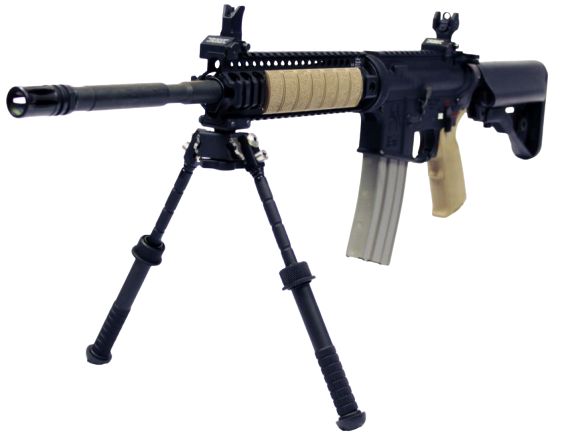
With the typical notched legs, rubber feet, and blocky center hub, the Atlas’ V8 doesn’t seem so different from, say, Magpul’s Bipod or the usual Harris. Except hiding underneath all the black anodizing and knurled fixtures rests a uniquely adjustable system that provides all sorts of pan, tilt, locking, and forward and rearward leg adjustment in addition to the typical vertical height adjustments. First let’s break down the specs:
Features & Specs
- Legs made from 6061 billet aluminum.
- Provides 30 degrees of left and right cant and tilt
- Cant and tilt resistance adjustable with center knob
- Hub and pins made from heat-treated stainless steel.
- Sports a “mil-spec” type III anodized finish in matte black
- Provides vertical adjustments from 4.75″ to 9″ in height
- Five forward and rearward adjustments for leg position
- Height adjustments made with spring-loaded pull rings
- Base model (w/ Picatinny attach) weighs 11.0 ounces
Leg Construction & Height Adjustment
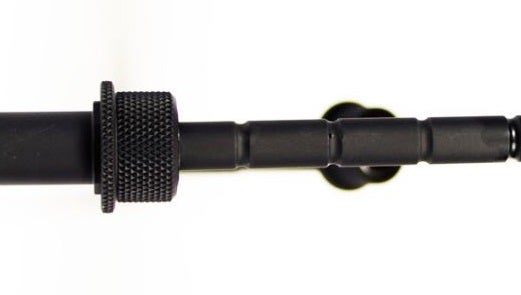
Each leg is individually adjustable for height, making it easier to achieve a stable shooting position on uneven terrain. Five notches provide locked positions, with minimum height starting at 4.75″ and max height on each leg topping out at 9″. The legs and extensions are made from billet aluminum, and sport a nice matte black anodized finish, like you’d find on most black rifles. If you’re using the BT10 for an AR platform, it’ll blend in nicely.
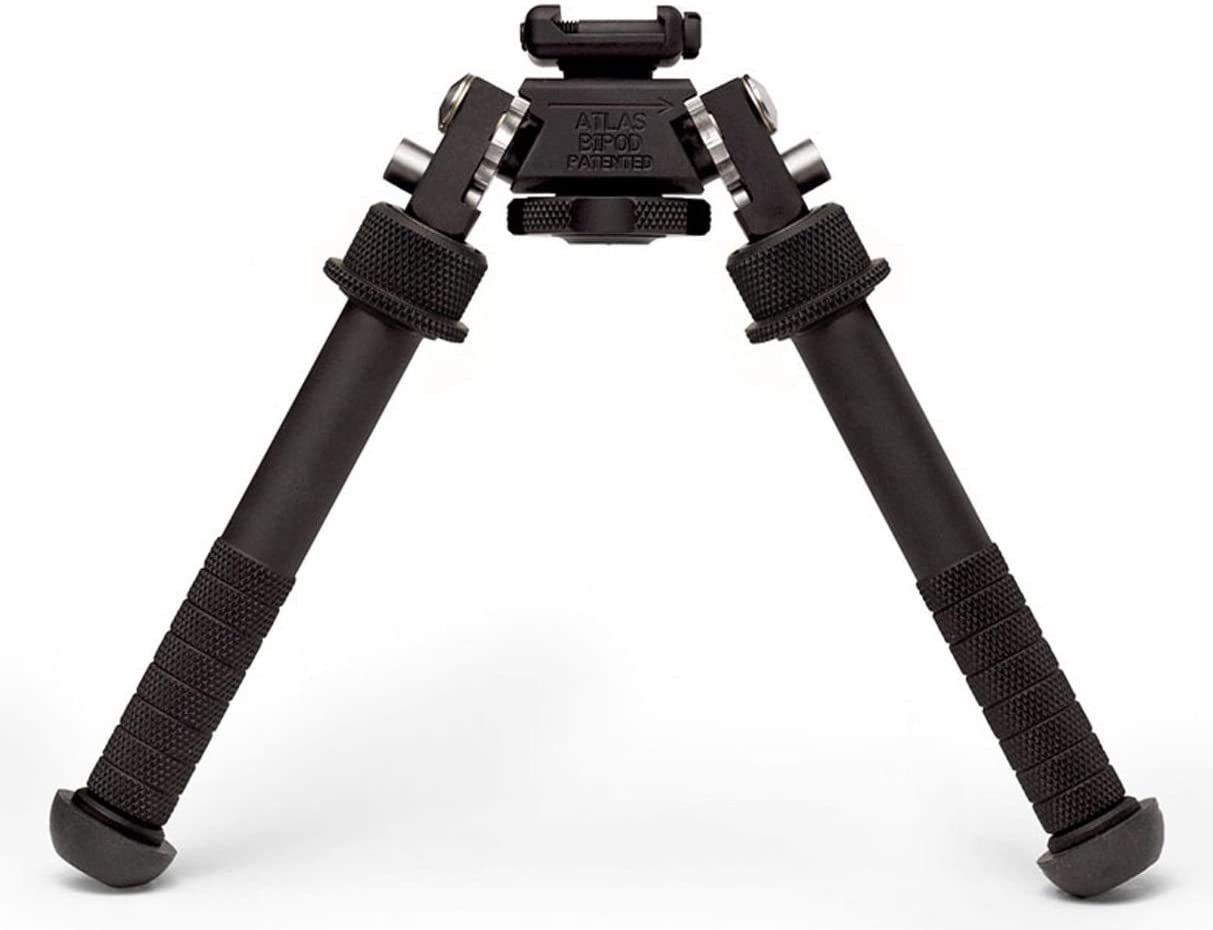
Each leg is locked and adjusted via the knurled spring-loaded pull rings. Atlas ditched typical buttons, which can get gunked or stuck up with mud and dirt. Each leg base is also knurled for easy contact with gloves. At the bottom, each rubber foot pad is easily removable via a small detent. Feet can be swapped out for Atlas’ other pads and feet styles, like their popular spiked pads for prone shooting from the dirt.
Pan/Tilt Hub and Hardware
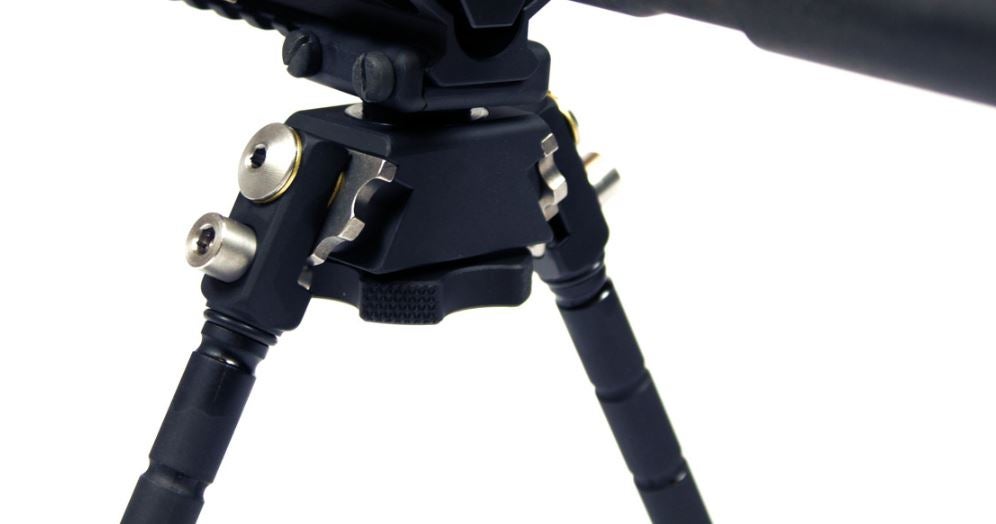
Up in the center workings of the BT10 is the center hub, which hosts the stainless hardware for each leg’s mount and locking fixtures, and the knurled resistance-adjusting knob for setting the pan and tilt. When the knob is loosened, the hub provides completely free weapon movement for left-right scanning and left-right tilt, up to 15 degrees per side, for 30 degrees of total movement. As the knob is tightened, resistance is applied to pan and tilt movements to enhance stability and reduce “jitters” when you’re looking down the scope.
Each leg’s hardware is made from heat-treated stainless steel, providing excellent resistance to rust in the field. The spring-loaded locking pins and cogs allow each leg to lock 180 degrees forward, 45 degrees forward, 90 degrees vertical, 45 degrees backward, and 180 degrees rearward. This provides five total positions for each leg to lock in. To provide longevity and ensure legs don’t bind or stick, each mounting bolt sports a set of nicely pressed metal washers.
Available Attachment Methods & Weight
With its high range of adjustability, the BT10 V8 was designed for providing a stable platform for various calibers and rifles. To ensure compatibility with typical tactical rifles, bolt guns, and everything in between, Atlas developed the BT10 to accept various attachment methods for different stocks and guards.
Base BT10: Picatinny, 11.0 ounces
The base model, pictured in this review, provides a simple but effective low-profile 1913/Picatinny mount which is tightened via two flathead bolts. This version is the simplest and most effective for the typical AR with any rail system and a Picatinny attachment.
Base BT10-NC: Various, 10.8 ounces
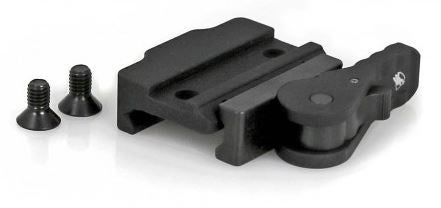
The BT10 can be purchased as an “-NC” or “no-clamp” model. This model is intended for shooters who want to mount the BT10 on various rifles, or who prefer having the ability to swap out the bipod’s attachment method for others. The NC mount comes with two holes threaded for 10/32″. It interfaces with the ADM-170-S lever Picatinny mount shown above, in addition to these other rifle mounts:
- LT271 Mount
- ARMS 17S Mount
- BT70 M-Lok Adapter
- Badger Ordnance TRAMP mount
- BT19 Accuracy International Spigot
- Any ARCA dovetail mount with the same 1.1″ two-hole pattern
Is the BT10 Worth It?
For its adjustability, tough construction, and compact profile, the BT10 V8 earns a higher price than many other bipods. It’s around double the price of the average Harris or Magpul’s one-off bipod. In exchange, you’re also getting some unique advantages: The BT10 V8 is one of the only bipods capable of interfacing with virtually every possible mounting attachment, making it an investment that you’ll swap between all your long guns, rather than shell out cash for multiple bipods. It’s also one of few bipods that ditches all external fixtures, springs, and fasteners, providing a smaller footprint when stowed than others.
Finally, its an Atlas pod, so you also gain access to their plethora of interchangeable pads and feet, making this a bipod that can be used at the bench or in the field. For an option that effectively provides various bipods in one unit, the higher price tag may be worth it for shooters who own more than one rifle.
